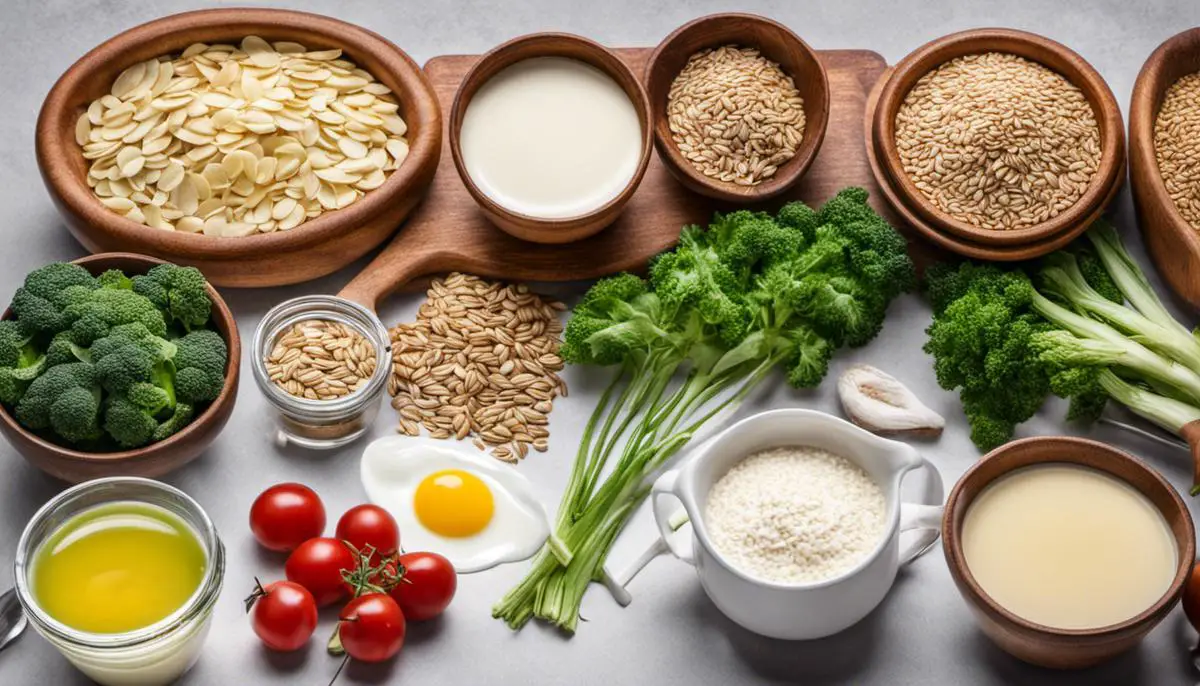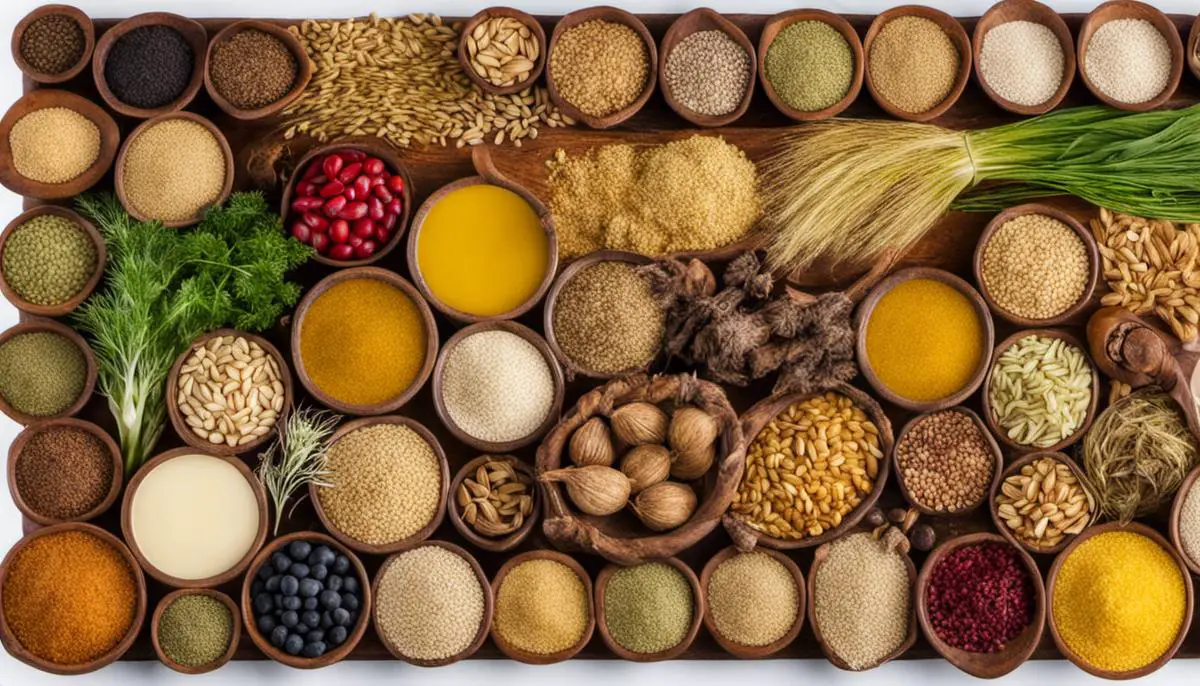In the wonderful journey of breastfeeding, a mother’s concern often revolves around the adequacy of her milk supply. Having a clear understanding of lactation, embracing effective breastfeeding techniques, and maintaining a balanced diet can be useful in amplifying milk production. Also, exploring the realm of galactagogues – substances known to augment milk supply – can offer an additional natural boost. This comprehensive guide will equip you with knowledge about the physiology of lactation, the impact of breastfeeding practices, dietary requirements, hydration, and the use of natural galactagogues, paving a path towards fulfilling breastfeeding experience.
Understanding Lactation
Understanding Lactation Basics
Lactation is a biological process where breasts produce milk for breastfeeding. The production of breast milk begins during pregnancy, however, it fully kicks in a few days after childbirth. The changes in your body during and after pregnancy, aided by a cocktail of hormones, facilitate this remarkable ability to provide optimal nutrition for a newborn baby.
Key Hormones Involved in Lactation
The two hormones central to lactation are prolactin and oxytocin. Prolactin triggers the breasts to produce milk, while oxytocin helps to get this milk to the baby by causing the alveoli to contract and push milk through the duct system. The production of these hormones increases during pregnancy, preparing the breasts for lactation.
Understanding Prolactin
Prolactin is commonly referred to as the “milk-producing hormone.” Its levels increase during pregnancy and continue to stay up for several months after childbirth, particularly if you’re exclusively breastfeeding. This is because breastfeeding or the expression of milk from nipples sends signals to the brain that stimulates the release of prolactin. It’s a feedback loop wherein frequent nursing leads to higher prolactin levels which, in turn, leads to increased milk production.
Role of Oxytocin in Lactation
Oxytocin, also known as the “love hormone,” plays an essential role in bonding; however, it also helps in the ejection of milk from the breasts, often termed as the “let-down reflex.” This hormone also enables contractions in the uterus during labor and helps it return to its pre-pregnancy size after delivery.
Lifestyle Factors and Lactation
Certain lifestyle factors do influence lactation. The frequency and duration of nursing, maternal diet, stress levels, and overall health all play a role in successful milk production and breastfeeding. Frequent and regular nursing sessions or pumping of milk send signals to your brain to produce more prolactin, thereby increasing milk production.
Overall, understanding these biological and hormonal aspects can provide insight into what helps or hinders breast milk production. By applying these insights, you can naturally enhance lactation and ensure a healthy, nourishing experience for your baby.

Breastfeeding Techniques and Practices
‘On Demand’ Breastfeeding
‘On Demand’ breastfeeding is a method where babies dictate their feeding schedule rather than being set on a strict schedule by the caregiver. This means breastfeeding whenever your baby shows signs of hunger such as increased alertness or activity, mouthing, or crying. This approach can often lead to more frequent feeding, which in turn increases breast milk production.
Frequent Feeding
Frequent feeding is another natural method to increase breast milk production. Aim to breastfeed your baby every two hours during the day and at least once at night. This frequent nursing signals your body to produce more milk as it’s required. The increase in demand stimulates the release of prolactin, the hormone responsible for the production of breast milk.
Ensuring Proper Latch
Ensuring that your baby is latching on correctly can greatly impact the amount of milk you produce. When a baby latches on well, they can more effectively remove milk from the breast, which in turn stimulates further milk production. Signs of proper latching include your baby’s mouth wide open, with their chin touching your breast and their bottom lip turned outward. You should also notice rhythmic sucking and swallowing patterns and feel a tugging sensation but not pain during breastfeeding.
Using Both Breasts During Each Session
To optimize milk supply, try to use both breasts during each feeding session. This practice, often referred to as ‘switch nursing’, involves feeding your baby from one breast and, once they lose interest, switching them over to the other breast. This process helps to ensure that both breasts are being emptied of their milk supplies regularly, further driving the signal to your body to produce more milk.
Clearing Blocked Milk Ducts
Blocked milk ducts can hinder the flow of milk and cause discomfort. To effectively clear blocked ducts, continue to breastfeed or pump while applying a warm compress to the affected area. Gentle massaging in a downward motion towards the nipple can also assist in clearing the blockage. Ensuring ducts are clear decreases the potential for inflammation or infection while also promoting increased milk production. Regular breast massages can stimulate milk production and have the added benefit of spotting and removing clogs before they become problematic.
Each of these natural methods can help increase milk production. Remember, it’s essential to stay hydrated and maintain a balanced diet to support your body in producing healthy breast milk. It might also be helpful to seek advice from lactation consultants who can provide professional guidance and support.

Diet and Hydration
Diet For Increased Breast Milk Production
As a nursing mother, it’s crucial to maintain a balanced and nutritious diet, not only for your own health, but also to improve breast milk production. Consumption of certain foods has proven to enhance breast milk supply. These include:
- Oats: They are a significant source of iron which can increase milk supply. You can start your day with a bowl of oatmeal or include oats in your meals in different ways.
- Fennel and Fenugreek Seeds: Both of them are known to boost milk production. You can drink tea made with fennel and fenugreek, or use them in your regular cooking.
- Garlic: It’s considered a galactagogue, a substance that improves lactation. Use it frequently in your food preparations.
- Green Leafy Vegetables: Spinach, kale, and other green leafy vegetables are rich in iron, calcium, and folate. These promote lactation, so include them in your regular diet.
- Barley: Barley contains beta-glucan, a polysaccharide that has been shown to increase prolactin (a breastfeeding hormone) levels, thus increasing milk supply. You can make barley water or include barley in your meals.
Remember, while eating these foods, you should continue to have a balanced diet. Naturally, attempts to increase breast milk supply will work best if your overall health and diet are good.
Vitamins And Minerals To Boost Milk Production
Increasing your intake of certain vitamins and minerals may also aid in increasing breast milk production. These include:
- Vitamin D: It is not only essential for the mother’s health, but also for the baby’s. Ensure you get enough sunlight and eat Vitamin D-rich foods like fish, eggs, and fortified foods.
- Calcium: Consuming calcium-rich foods like dairy products, green leafy vegetables, and tofu can contribute to increased milk production.
- Iron: Iron deficiency can lead to decreased milk supply. Incorporate iron-rich foods like lean meats, poultry, seafood, and beans into your diet.
Taking supplements may be useful, but always consult your healthcare provider before starting any new supplement regimen.
Importance Of Hydration For Milk Production
Keeping yourself hydrated is another crucial aspect of increasing breast milk production. While you don’t need to force fluids, you should drink whenever you’re thirsty. Here are ways to naturally increase your hydration levels:
- Water: The best and most natural way to stay hydrated. Drink a glass of water each time you breastfeed to help keep your hydration levels up.
- Soup: Eating soups is another good way to increase your fluid intake. Opt for nutrient-dense soups like bone broth, vegetable soup, or chicken soup.
- Fruits and Vegetables: Many fruits and vegetables like watermelon, cucumbers, and oranges contain high water content and can contribute to your total fluid intake.
- Milk and Juice: Both can contribute to your daily fluid requirements. However, limit the intake of juices due to their high sugar content.
Beverages And Foods That Can Boost Hydration Levels
In addition to water, there are other beverages and foods that can enhance your hydration levels and, consequently, milk supply:
- Herbal Tea: Some herbal teas, like fenugreek tea, can be beneficial for increasing breast milk production. Make sure to choose decaffeinated varieties.
- Coconut Water: It is a rich source of electrolytes and can be a hydrating drink for breastfeeding mothers.
Remember, while diet and hydration are important for milk production, they won’t work alone. You should also ensure to breastfeed your baby frequently or pump milk in between feeds. This will stimulate your body to produce more milk. Regular rest and avoiding stress are other key factors in maintaining and increasing milk supply. Your health and wellbeing, as a nursing mother, are vital for your baby’s growth and development.

Use of Galactagogues
Understanding Galactagogues
Galactagogues are substances that help to increase breast milk production in lactating mothers. They exist in a variety of forms including certain foods, herbs and medications. Natural galactagogues like fenugreek, fennel, oats, and brewer’s yeast are often preferred due to their low risk of side effects.
Using Fenugreek as a Galactagogue
One of the most popular natural galactagogues is fenugreek. This herb can be ingested in capsule form, or used as a tea, and is easily accessible in many health foods stores. Typically, fenugreek is taken in dosages ranging from 1 to 2 grams daily. It’s important to be aware that fenugreek can cause side effects like diarrhea and a maple syrup smell in urine or sweat. As for the effectiveness, several studies have shown a marked increase in breast milk volume within 1 to 2 days of starting fenugreek.
Fennel for Breast Milk Production
Fennel, another herb, can boost breast milk production, and also combat baby colic. Fennel can be eaten raw, cooked, or as a tea. For optimal results, it is recommended to consume fennel in moderation, about one to two servings per day. Possible side effects include allergic reactions for those allergic to plants in the carrot family. The research basis for fennel’s effectiveness as a galactagogue is primarily anecdotal, although many mothers report success.
Utilizing Oats to Increase Milk Supply
Oats are an excellent source of iron, an essential nutrient for breastfeeding mothers, and have been used traditionally as a galactagogue. Using oats is as simple as incorporating more oatmeal or oat-based foods into your diet. There isn’t concrete scientific front to back oat’s use in boosting milk production, but it’s generally agreed upon as a healthy dietary addition for breastfeeding moms.
The Role of Brewer’s Yeast in Lactation
Brewer’s yeast, often used in baking and brewing beer, is another natural galactagogue. It’s high in B vitamins and protein, which can help to stimulate milk production. Brewer’s yeast can be sprinkled on foods or mixed into drinks. Dosage varies based on individual needs and should be started gradually to gauge tolerance. Main side effects can include increased gas and bloating. Similarly, there isn’t a vast amount of research backing its usage but many mothers and lactation consultants swear by its efficacy.
Final Remarks
Many natural galactagogues are readily available and easy to incorporate into a daily diet. However, before trying any new substance to increase breast milk supply, consult with a healthcare provider or a lactation consultant, to ensure it’s safe for both mother and baby. It’s also critical to remember that proper hydration, regular nursing or pumping, and a balanced diet are most crucial for maintaining healthy milk supply.

Ultimately, boosting breast milk production naturally is an amalgamation of understanding the science of lactation, adopting effective breastfeeding techniques, and nourishing the body with a well-balanced, hydrating diet. Along with these, incorporating natural galactagogues, under professional guidance, could potentially favor increased milk production. Knowledge and practice, synergized with patience, constitute the cornerstone of a wholesome breastfeeding journey. Embrace this phase with positivity and confidence, and remember that every drop of milk is a testament to your love and dedication as a mother.
